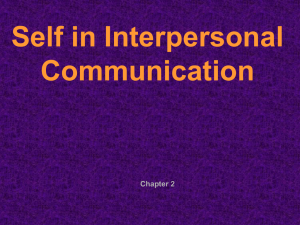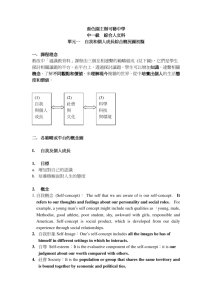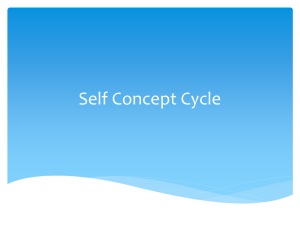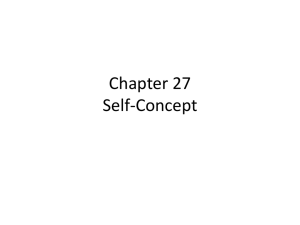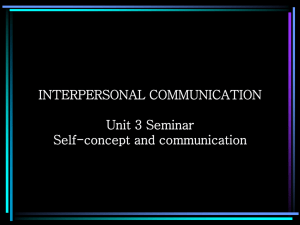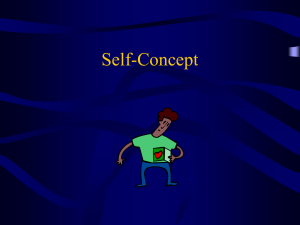Transition to Middle School
advertisement
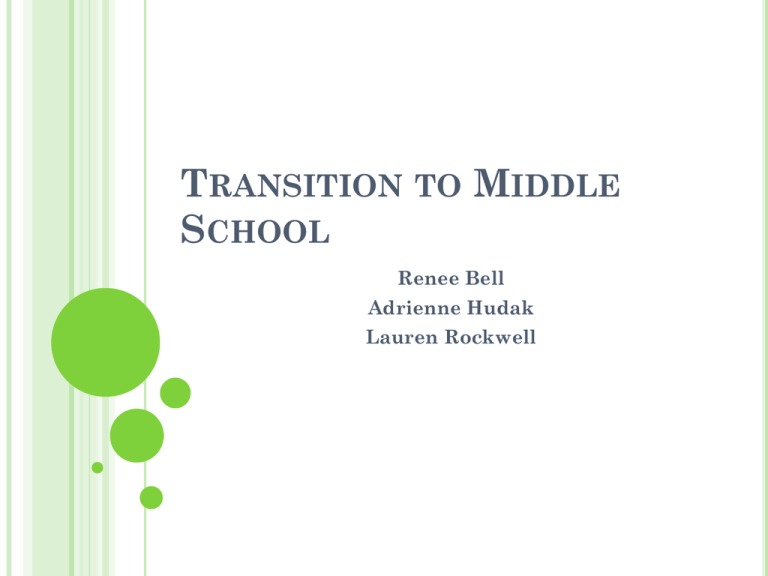
TRANSITION TO MIDDLE SCHOOL Renee Bell Adrienne Hudak Lauren Rockwell WHY THIS TOPIC? Research shows that middle school transitions: Lead to changes in social behavior, as students feel anonymous Can lower self-esteem Can increase school-related stress, and depressive symptoms We have developed a 3-session classroom guidance program to address the following issues: Friendship & Bullying Self-Esteem & Self-Concept The academic and organizational demands of middle school GIRLS GROUPS: FRIENDSHIP AND SELF ESTEEM This three-tiered activity is designed to teach Seeing equality behind appearances, Practice looking for the good in others, Practice encouraging others, And see how important this can be to our thought bubbles PART ONE: THE SNEETCHES The book tells the story of how “starbellied” Sneetches think they are better than “plain-bellied” Sneetches. After story topics: How did the Sneetches treat each other at the beginning of the story? The end? What things do we treat like our starbellies? PART TWO: BALL ENCOURAGEMENT Student Stand in a Circle, some get stars on postit notes, others get plain post-its. The ball is tossed around the circle (students with starts must pass to students without stars), and as the ball is passed, you say one thing that makes the next person special. PART THREE: THE POWER OF ENCOURAGEMENT Next, we will discuss how these things felt, and write those good feelings and thoughts on the board, in thought bubbles. We will discuss how kind words and actions help us feel good, and how that is important to do for everyone. PART THREE CONTINUED Finally, the girls will each have their picture taken in front of the board, and receive a copy to hang in their locker. This will remind them to say kind things to themselves and others SUPERHERO SUCCESS! SELF-CONCEPT IN TRANSITION Students in transition between schools at this age are often very critical of themselves Friendships are viewed as very important This transition can often be referred to as a time of crisis Form own value system based on social and physical environments SELF-CONCEPT CONTINUED Poor self- esteem correlated with transition Simmons (1973) found biggest decline in selfesteem was between 6th-7th grade Biggest time of stress during adolescents life; can affect school, self-concept, friendships, etc. Important to develop positive self-concept & understand strengths and weaknesses at this age! QUOTE “Everybody is a genius. But if you judge a fish by its ability to climb a tree, it will live its whole life believing that it is stupid.” ― Albert Einstein TODAY’S LEARNING TARGETS I can describe my strengths that will help me be successful at school. I can describe my weaknesses and how I will overcome them. THE HULK Strength: Super strength Alter ego: Super smart Weakness: Gets angry and frustrated easily. When angry, he transforms. He gets very strong, but can’t control his strength. He loses his super smarts IRON MAN Strength: Very smart Loyal to those who help him Weakness: Doesn’t think about other people’s feelings Doesn’t always try his hardest THOR Strength: Super strong Good leader Weakness: Likes to start fights, thinks it will make him more special or a better leader Doesn’t always think before he acts MAGNETO Strength: Can control metal objects Can create force fields Weakness: Doesn’t let people get to know him Doesn’t like people who are different from him MIDDLE SCHOOL…HERE WE COME! Academic, Organization and Planning activities for the Middle School transition MAKING THE TRANSITION Research indicates that organization and planning demands can be some of the most challenging changes that middle school students face Changes in scheduling, using lockers, taking electives, increased homework, new and more teachers were listed as some of the ecological changes associated with the transition to middle school The good news is that support and interventions provided by the school can help students remain resilient during the transition FINDING YOUR WAY AROUND The counselor provides students with a map of the middle school and points out the 6th grade classrooms, as well as the cafeteria, library, office, etc. THE SCHEDULE 1st Period – 7:45 – 8:30 2nd Period – 8:35 – 9:20 3rd Period – 9:25 – 10:10 4th Period – 10:15 – 11:30 Lunch - 11:35 – 12:40 5th Period – 12:45 – 1:30 6th Period – 1:35 – 2:20 7th Period – 2:25 – 3:10 Dismissal – 3:10 Busses pull out at 3:25 The counselor will introduce the middle school bell schedule and discuss the process of changing classes. WHAT CLASSES WILL I BE TAKING?! The counselor will discuss with students the required courses which they will all be taking, and then discuss their elective options. Later, the counselor will sit down with each student to select electives and level placements. Typical 6th Grade Schedule Math (1 period) Language Arts (2 periods) Science (1 period) Social Studies (1 period) Arts Elective (Band, Choir, or Art; 1 period) Health & Physical Education (1 period) KEEPING TRACK OF IT ALL… The counselor will give students an overview of their assignment notebook along with tips for recording assignments accurately. Record homework assignments, tests and study plans. Ex: Vocab test Tuesday! Study flashcards for 1 hr. on Monday night SETTING STUDENTS UP FOR SUCCESS The transition to middle school is particularly challenging due to the fact that it overlaps with the onset of puberty Interventions addressing self-esteem, peer relationships, academics, and organization can help mediate these problems Adolescents who experience difficulty during the middle school transition often have academic, motivational, and emotional problems through out the rest of their school years. However, early intervention and prevention can stop problems before they escalate. REFERENCES Akos, P. (2004). Advice and student agency in the transition to middle school. Research in Middle Level Education, 27(2). Blyth, D. A., Simmons, R. G., & Carlton-Ford, S. (1983). The adjustment of early adolescents to school transitions. Journal of Early Adolescence, 3, 105-120. Ginott, G.M. (1968), A functional approach to group counseling. In G.M. Gazda (Ed.), Basic approaches to group psychotherapy and group counseling. Springfield, IL: Charles C. Thomas. Langberg, J.M. (2011). Homework, Organization, and Planning Skills (HOPS) Interventions. Bethesda, MD: National Association of School Psychologists. Mullens, E. R. J. (1997). Changes in young adolescents' self-perceptions across the transition from elementary to middle school. ProQuest Dissertations and Theses Odegaard, S. (1992). Student, parent, and teacher perceptions of the transition from elementary to middle school. ProQuest Dissertations and Theses REFERENCES CONTINUED Parker, A.K. (2009). Elementary organizational structures and young adolescent’s self-concept and classroom environment perceptions across the transition to middle school. Journal of Research in Childhood Education, 23(3), 325 – 339. Richardson, T. L. (2000). Emotional intelligence as a mediator of transition trauma in students progressing from elementary to middle school (Doctoral dissertation, Florida State University,2000). Dissertation Abstracts International, 61, 448A. Rudolph, K. D., Lambert, S. F., Clark, A. G. & Kurlakowsky, K. D.(2001). Negotiating the transition to middle school: The roleof self-regulatory processes. Child Development, 72, 929-946. Steiner, A. (2006). Helping her weather middle-school transitions. Daughters, 11 (2).

